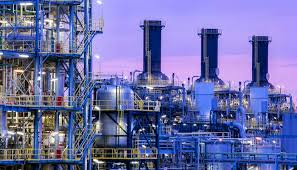Securing a Petroleum Products Storage License (PPSL) in Nigeria is a critical regulatory requirement for companies that own or operate bulk storage facilities for petroleum products (e.g., Automatic Gas Systems, depots, jetties, tank farms). The Nigerian Midstream and Downstream Petroleum Regulatory Authority (NMDPRA) issues this license through its Central Electronic Licensing & Permit System (CELPS). Below is a comprehensive, step-by-step guide—including fees straight from NMDPRA’s official portals—to help you navigate the process smoothly and ensure full compliance.
1. Understand What a PPSL Covers
A PPSL authorises you to:
-
Construct, operate, and maintain bulk storage facilities for petroleum liquids.
-
Load, unload, store, and wholesale petroleum products in accordance with safety and environmental standards.
-
Offer third-party throughput services (if licensed for open-access operations).
Note: Separate licenses govern import/export permits, distribution, depots, jetties, and mobile tankers. Ensure you apply for the correct combination of permits via CELPS.
2. Pre-Qualification Requirements
Before applying, make sure you have:
-
Incorporation Documents
– CAC Certificate of Incorporation
– Memorandum & Articles of Association -
Tax & Compliance Documents
– 3-year Tax Clearance Certificate
– Evidence of TIN registration
– Evidence of filing annual returns with NMDPRA (if renewing) -
Technical & Safety Documentation
– Approved engineering design of tanks and piping
– Environmental Impact Assessment (where applicable)
– Facility HSE Management Plan and laboratory certification (for LPG/laboratory-equipped depots) -
Site Inspection Readiness
– Layout drawings, fire-water systems, bunding arrangements
– Access roads, security fencing, signage -
Financial Standing
– Bank reference letter
– Audited financial statements
3. Create & Populate Your CELPS Account
-
Register on CELPS
Go to https://celps.nmdpra.gov.ng/register and create your company account.
celps.nmdpra.gov.ng -
Verify Your Email & Log In
Check your inbox, verify the activation link, then log in at https://celps.nmdpra.gov.ng. -
Complete Company Profile
– Full company name, RC number, TIN, contact person
– Physical address of storage facility -
Select “DEPOT” Service
Under the “Central Electronic Licensing and Permit System (CELPS)” menu, choose “DEPOT – Depot Management System” for petroleum products storage.
4. Prepare & Upload Required Documents
On CELPS, under your application workspace:
| Document | Format |
|---|---|
| CAC Certificate & M&A | |
| Tax Clearance Certificates | |
| Technical Drawings & Site Layouts | PDF/DWG |
| HSE & Lab Certification Reports | |
| Bank Reference Letter | |
| Environmental Impact Assessment (if needed) |
All uploads must be clear, legible, and in the prescribed file sizes.
5. Pay Application & Processing Fees
The fees for a PPSL are determined by the storage capacity and category of your facility. You pay these on the MDOGISP portal (https://mdogisp.nmdpra.gov.ng/Home/FeeSchedule):
| Category | Application Fee | Service Charge |
|---|---|---|
| General Category | ₦ 5,000 | ₦ 500 |
| Major Category | ₦ 25,000 | ₦ 2,500 |
| Specialised Category | ₦ 250,000 | ₦ 7,500 |
Tip: Determine your category based on throughput volume. Major and specialised categories typically cover larger tank farms and jetties.
6. Submit Application & Await Review
-
Finalise & Submit
Review all entries, ensure documents and payments are in place, then click “Submit”. -
NMDPRA Evaluation
– Technical Review: Verification of drawings, HSE compliance, and laboratory capabilities.
– Site Inspection: A NMDPRA inspector visits your facility (inspection fee billed separately).
– Approval: On meeting all conditions, NMDPRA issues your PPSL electronically. -
Download Your License
Log back into CELPS to download both your PPSL and Receipt of Payment.
7. Renewal & Ongoing Compliance
-
Validity: PPSLs are valid for 12 months.
-
Renewal: Apply at least 60 days before expiry via CELPS; pay renewal fees (same schedule).
-
Operational Returns: Lodge monthly throughput returns and incident reports on CELPS.
-
Safety Audits: Undergo periodic audits; non-compliance can lead to suspension.
Frequently Asked Questions (from “People Also Ask”)
-
What’s the difference between a Depot Permit and a Storage License?
A Depot Permit covers off-take and loading operations; a Storage License (PPSL) covers the storage facility itself, including throughput and wholesale operations. -
Can I apply for PPSL without owning a facility?
No. The PPSL is issued only to owners or leaseholders of physical storage installations. -
Is an Environmental Impact Assessment mandatory?
Yes, for new or significantly expanded installations. -
How long does the issuance process take?
Typically 8–12 weeks, depending on the completeness of documentation and site readiness. -
Are there post-licensing obligations?
Yes—submit monthly throughput returns, incident reports, and undergo annual safety audits.
Common Misconceptions
-
“Paying the fee guarantees approval.”
Fees secure processing, but licensing hinges on technical and safety compliance. -
“One license covers multiple facilities.”
Each distinct storage location (depot, jetty, tank farm) requires its own PPSL. -
“Online submission eliminates inspections.”
Physical site inspections remain mandatory, even for renewals.
By following these steps, providing complete and accurate documentation, and staying on top of regulatory updates, your company will be well-positioned to secure (and renew) its Petroleum Products Storage License swiftly and remain fully compliant. Good luck!


